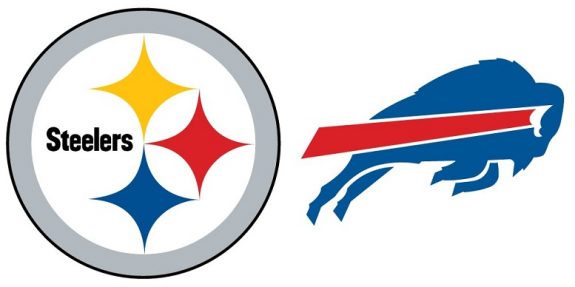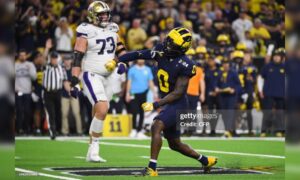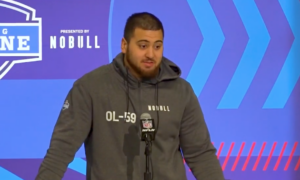One might look at the offensive numbers for the Pittsburgh Steelers and Buffalo Bills and see two offenses that are complete opposites in terms of style. The Steelers, after all, are ranked in the NFL’s top ten in pass completions, attempts, yards, touchdowns and passer rating. The Bills, on the other hand, are the top rushing team in the league in yards, touchdowns, and average yards per carry. They are also ninth in points per game (25.4), while the Steelers are 12th (24.2).
While the two teams vary in strength and style, they also have a common link. The statistical category the Bills and Steelers both excel in – and could be critical in Sunday’s matchup – is red zone touchdown scoring percentage. Both are among the league’s most efficient red zone teams, with the Bills scoring touchdowns in 65.79 percent of their red zone trips (sixth) and the Steelers 61.29 percent (ninth).
But if we dig deeper, we find these two teams are at opposite ends of a very critical statistical spectrum. The host Bills have scored touchdowns in 78.57 percent of their red zone trips at New Era Stadium, the best home scoring rate in the league. Meanwhile, the Steelers will come to town having held their opponents to only 36.36 percent on the road, second to the New Orleans Saints (27.27%). Bottom line: if the Bills get inside the Steelers’ 20-yard line, something must give.
The Bills have three players who have scored most of their league-leading 23 rushing touchdowns: running back LeSean McCoy (nine), quarterback Tyrod Taylor (six) and running back Mike Gillislee (six). Seven of McCoy’s scores have come from inside the red zone, as have five of Taylor’s. Gillislee is the more specialized of the group as the primary goal-line back. All but one of his touchdowns have come from within five yards. The Steelers will likely look among these three to tote the ball in red zone opportunities, but the Bills’ play-calling will make it much more difficult to stop.
In this play during Week 12 against Jacksonville, the Bills run a speed option out of the Pistol. Taylor reads the play-side defensive end crashing down and makes the pitch to McCoy, who makes one cut and finds an open lane into the end zone. The Steelers must be sound with their gap control and pursuit, or they will play right into McCoy’s quick one-cut ability.
Last week in Oakland, the Bills rushed for 212 yards at more than seven yards per carry and three touchdowns against the Raiders. Taylor scored on this read-option play in a similar Pistol look to McCoy’s touchdown above, except this time the running backs are aligned to the left instead of the right. Taylor fakes the dive to McCoy, getting the Raiders’ Khalil Mack to crash down and open a wide-open lane outside for an easy touchdown.
Taylor’s read-option touchdown run against Oakland sets up another red zone scoring play on their very next possession. Using the same two-back Pistol look, the Bills move wide receiver Brandon Tate in motion to set up a potential end-around option play. That causes Bruce Irvin to read Tate to the outside of the formation, giving Taylor the dive read for Gillislee to run up the middle for a two-yard score.
The Steelers’ defense has survived throughout the season by turning teams away inside the red zone with greater frequency than their own offense has scored inside the 20. But this time they will face the offense who has the most success in that same situation when it suits them most on their home field. The absence of Cameron Heyward (torn pectoral muscle) and potentially Javon Hargrave (concussion) could make it even more difficult, but it will be critical to pass the toughest red zone test this unit may see all season long.











